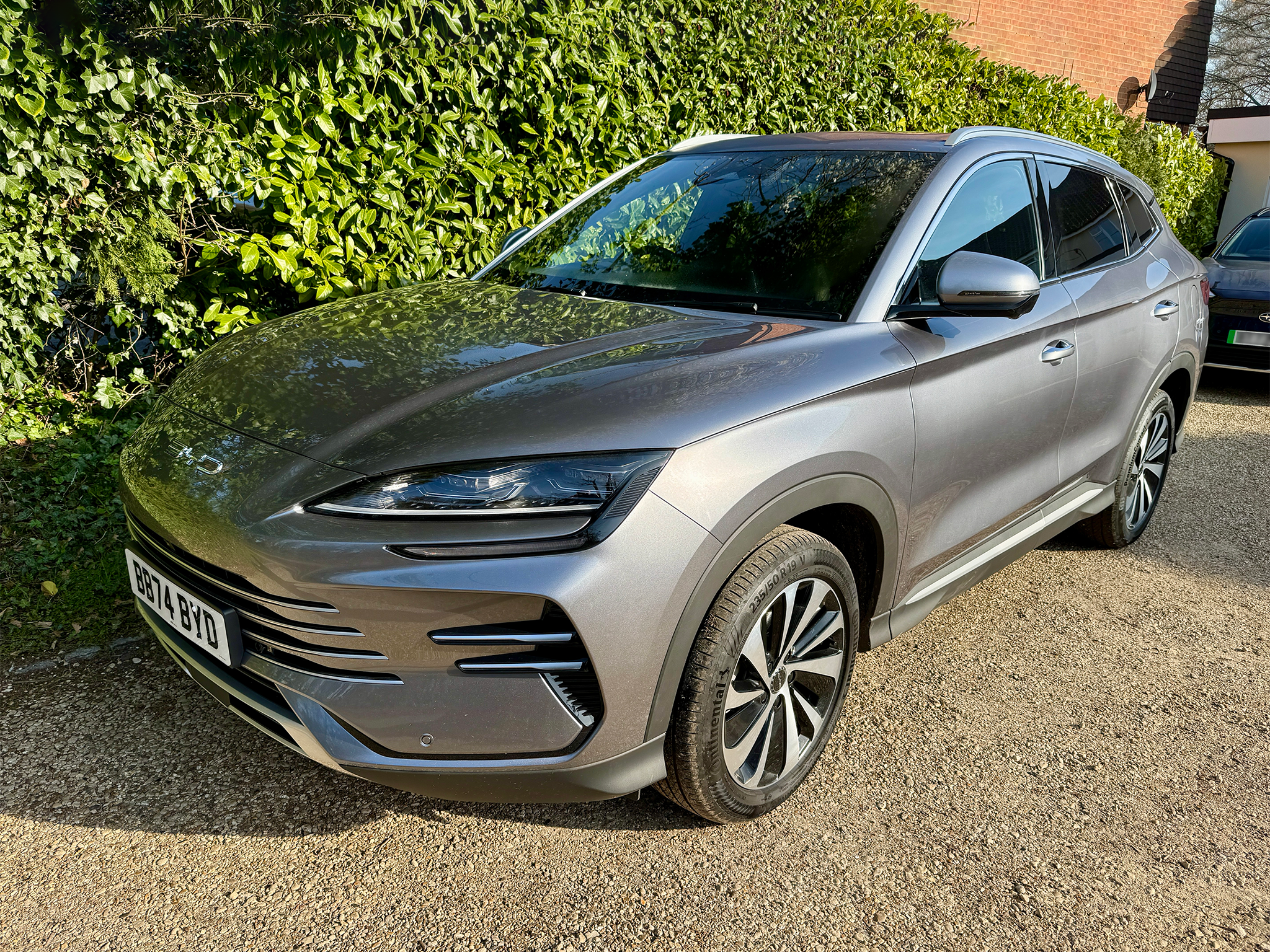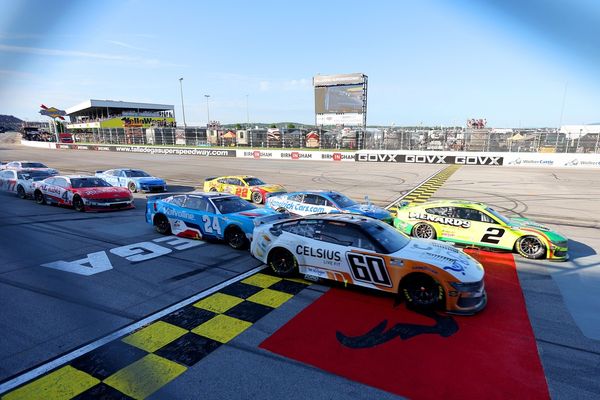BYD may be making waves in the EV world for outselling Tesla, but the Chinese car maker does more than just fully electric cars. The confusingly named BYD Seal U DM-i is a plug-in hybrid, but one with a difference.
As you’d expect from a tech company that’s made far more batteries than it has cars, this plug-in hybrid promises strong electric-only range from its blade batteries. The engine is then used to charge up the battery and will only occasionally kick in to actually power the front wheels. It’s clever and works well, and on one 400 mile round trip I took – starting with a full tank of fuel – we still had a 200 mile range when I got back.
So the Seal U is efficient, but it’s also great value. Our Boost model has a list price of £33,205, which would be competitive enough for a small plug-in hybrid model (a Golf plug-in hybrid starts at £36,000). For a mid-size SUV that’s seriously impressive, especially when you check out the standard kit list.
Of course, things aren’t quite perfect. The ride is a mixed bag of feeling a bit floaty at times and a bit firm over potholes, while the steering is a bit lifeless. But neither would put me off living with a Seal U and it’s still a car I’d wholeheartedly recommend.
How we tested
I used a Seal U for over a week, taking it from London to Liverpool and back in a day – and getting home with more than 200 miles range left – and using it as a family runaround for the rest of the week.
BYD Seal U DM-i: From £33,205, BYD.com

Independent rating: 9/10
- Pros: Loads of space, frugal, incredible value
- Cons: Dynamics lack a little sophistication
BYD Seal U D-Mi specs
- Price range: £33,205 to £39,905
- Battery size: 18.3kWh & 26.6kWh
- Maximum EV range: 78 miles
- Engine: 1.5-litre petrol
- Maximum claimed battery & engine range: 706 miles
- Maximum charging rate: 18kW
Battery, range, charging, performance and drive
Sit tight – this may take some explaining. There are three different versions of the BYD Seal U DM-i, with the DM-i tech being slightly different on each of them.
Our Boost model – the best value in the range – comes with an 18.3kWh Blade Battery with a handy 50 mile EV-only range. Alongside that is the 1.5-litre hybrid ‘Xiaoyun’ petrol engine developed specifically for use in the DM-i combination. Once most of the battery range has been used up, the engine will spend most of its time charging the battery up, so it’s usually the battery powering the rear wheels. The engine can power the wheels if really needed, but in most driving that’ll rarely happen.
It's a clever system, all managed through a high-tech CVT gearbox and as the technology does its business, it’s an entirely seamless and quiet process. The only thing we did notice on the motorway was a slight droning noise as the engine was running to charge up the battery – a bit like the gentle hum you get on an airplane. With the audio system doing its stuff you’ll hardly notice.
The Boost model gets a total combined range claim of 671 miles, which we got pretty close to. It's the same system in the other models, but with various twists. The mid-spec Comfort model gets a bigger 26.6kWh battery for an EV-only range of 77 miles and with the same 1.5-litre petrol engine a total claim of 699 miles.

Then there’s the top-spec Design model with all-wheel drive. That version gets the same 18.3kWh battery as the cheapest Boost model (the four-wheel drive system takes up a bit of space), but the petrol engine is turbocharged for a bit more power.
Not that you’ll be that bothered in a 0-62mph time in a family SUV, but for the record the all-wheel drive Design car posts an impressive 5.9 seconds, with the other cars adding three seconds to that time.
Charging times aren’t especially fast – the maximum charging speed from a DC fast charger is just 18kW, meaning the small battery will charge up in 35 minutes, or 55 minutes for the larger one – not that you’re reliant on electric power.
On our long motorway journey, the Seal U felt comfortable enough, but around town the suspension feels a little firm over potholes and drain covers. The body control isn’t great, so the car can feel a little floaty over undulations and around bends. It’s never anything that really bothered us when driving the car, especially given the value on offer with the space and kit level the car has.
Interior, practicality and boot space
The Seal U DM-i comes straight out of the drawer marked ‘lots of car for the cash’, so there’s bags of space on board and a really generous kit list. In fact, the only real difference between each model is the powertrain – even the £33,205 gets an impressive luxury car kit list.
There’s a full-length panoramic sunroof, powered tailgate, powered vegan-leather seats that are heated and cooled, keyless entry and even a head-up display. That’s before you get onto the ambient lighting that flashes in time with the music.
As the name suggests, the Seal U sits in BYD’s Ocean Series of models, alongside the Seal, Sealion 7, Dolphin and upcoming Dolphin Surf. As a result, the styling – inside and out – is supposed to mirror the oceans’ waves. It’s smart enough with a combination of soft-touch materials, piano black trim and silver-effect trim that makes you think you could be in something much more expensive.
The rear doors of the car open wide to reveal plenty of space in the back seats, although the boot isn’t huge. It’s big enough for most uses at 425 litres (or 1,440 litres with the seats folded) but clearly passenger space is the priority here.

Technology, stereo and infotainment
A scroll down the kit list for the Seal U DM-i reveals a couple of interesting facts: all models get the same level of kit and there are no options other than colour – even metallic paint is included.
In true BYD fashion, the star of the show is the 15.6in rotating screen, which rotates at a touch of a button or by saying “Hey BYD, rotate screen”. The only problem is it won’t rotate if you’re using Apple CarPlay, staying in landscape mode (Android Auto is also available and both formats connect wirelessly).
There’s another decent-size screen in front of the driver (12.3in wide to be precise) but it’s a bit cluttered with information. You’re better off relying on the head-up display (yes, it’s standard on a £33,205 car).
Pretty much anything that can be automated is automated, including the wipers and lights, as well as the driving with adaptive cruise control. Then there are the driver assistance features – we counted 31 of them, each with their own three- or four-letter initialisms.
Where in most cars you might be tempted to pay extra for an upgraded sound system, in the Seal U you can’t – there’s a 10-speaker Infinity audio set-up in every car.
If simplicity is your thing when choosing a new car, you’ll love the Seal U. The configurator is dull in comparison to rivals’ – you just choose your model and one of four colours (all included in the price) and that’s it.
Prices and running costs
The price is really the Seal U DM-i’s killer feature. This could well be Britain’s best value new car when you take a look at what you get for the money – including the plug-in hybrid system’s efficiency. £33,205 for the Boost model, which is all you really need, is sensational value.
Add to that the efficiency that we saw on a long journey, while costs will be kept even lower if you manage to plug in regularly on a low-rate energy tariff.
Although it’s early days for BYD still in the UK, we’re hearing good reports on reliability and build quality, but if something should go wrong you’re covered by a six-year warranty with an 93,000 mile limit on it.

BYD Seal U DM-i rivals
- Volkswagen Tiguan
- Jaecoo 7
FAQs
How long does it take to charge?
You’re not reliant on electric power in the BYD Seal U DM-i, which is just as well. Even at the fastest 18kW charging speeds the battery takes a good while to charge.
How much does it cost - is it worth it?
It’s a bargain. Starting at £33,205 it’s over £10,000 cheaper than the cheapest Volkswagen Tiguan PHEV with a far better kit count.
Does BYD replace batteries for free?
Like all other cars with big batteries, the battery is covered for eight years, while the whole car gets six years’ cover.
The verdict: BYD Seal U DM-i
I was hugely impressed by the Seal U DM-i. The plug-in hybrid may not ride quite as softly as some cars and it’s as far from a sports car as you can get in the way it drives, but for most people most of the time it’s good enough to drive and be driven in. The Seal U has bags of space and loads of kit at a price that makes you look twice – it costs £10,000 less than the cheapest Volkswagen Tiguan plug-in hybrid, before you take kit into account. The Seal U DM-i is sensational value.
Best electric cars 2025: Top 10 EVs to buy in the UK
Best used electric cars 2025: Top 10 second-hand EVs to buy
Should you buy a second-hand Tesla Model 3? This is our verdict after living with one
Mini Cooper E vs Renault 5 E-Tech: Which retro EV hatchback is best?
BYD Sealion 7 review: Fast SUV lags behind Tesla on price and range
Why Tesla’s fall forced Musk to step back from DOGE as profits plummet
Best small electric cars 2025: Top 11 affordable compact EVs to buy
Ford Puma Gen-E review: The UK’s best-selling car goes electric







